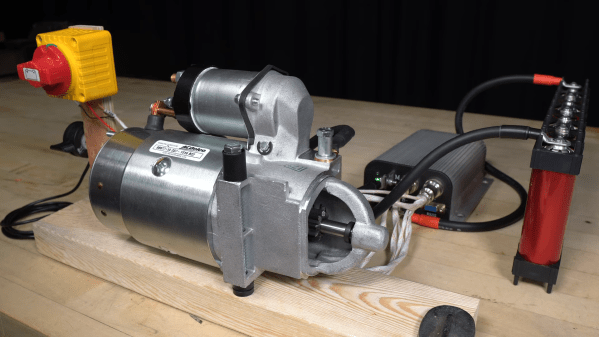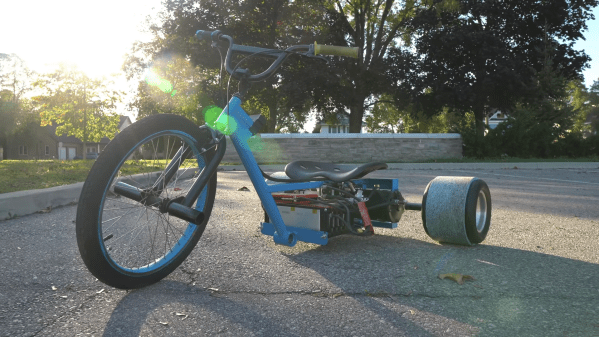Vehicle alternators are interesting beasts. Produced on a massive scale, these electric machines are available for a minimum of cost and contain all kinds of great parts: some power electronics and a belt-driven generator are generally standard fare. This generator can also be used as a motor with only minor changes to the machine as a whole, so thanks to economies of scale it’s possible to get readily-available, powerful, compact, and cheap motors for all kinds of projects using alternators as a starting point. [LeoDJ] noticed that this starter motor in a modern Mercedes had some interesting benefits beyond all of these perks, but it took a bit more work to get up and running than a typical alternator would have.
The motor, built by Bosch, can be found in the Mercedes E200 EQ Boost. This is a hybrid car, but different than something like a Prius in that it doesn’t have an electric motor capable of powering the car on its own. Instead it uses a combination starter motor/alternator/generator to provide extra power to the engine during acceleration, increasing efficiency and performance. It can also charge the small battery bank when the car slows down. Vehicles that use this system need much beefier alternators than a standard car, but liberating it from the car means that it has much more power available than a typical alternator would.
There were a number of issues to solve, though. Being that the motor/alternator has to do all of this extra work (and that it came out of a car whose brand is known for being tedious to work on in the first place) it is much more complicated than an off-the-shelf alternator. [LeoDJ] has been able to get his to spin by communicating with it over the CAN bus, but there’s still some work to be done before it goes into something like an impressively fast electric bicycle.
Thanks to [RoganDawes] for the tip!













